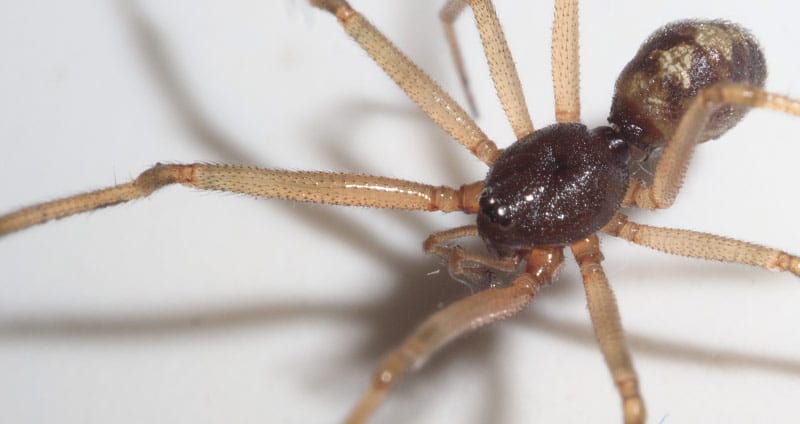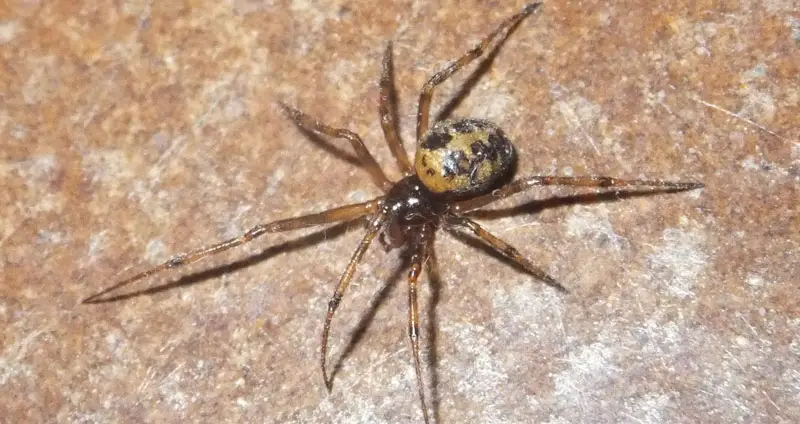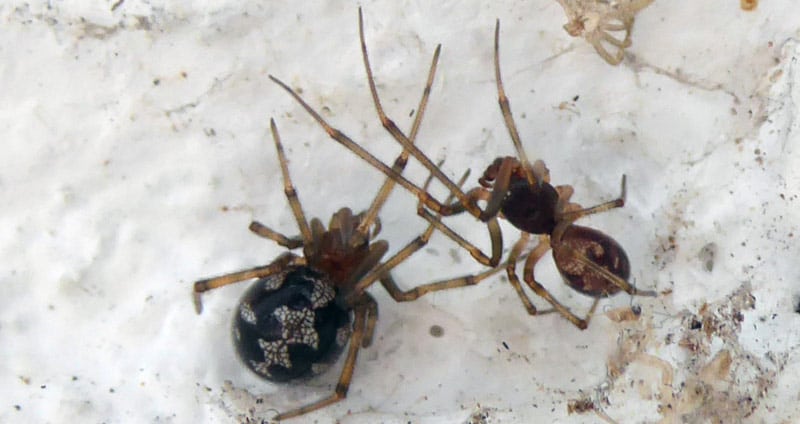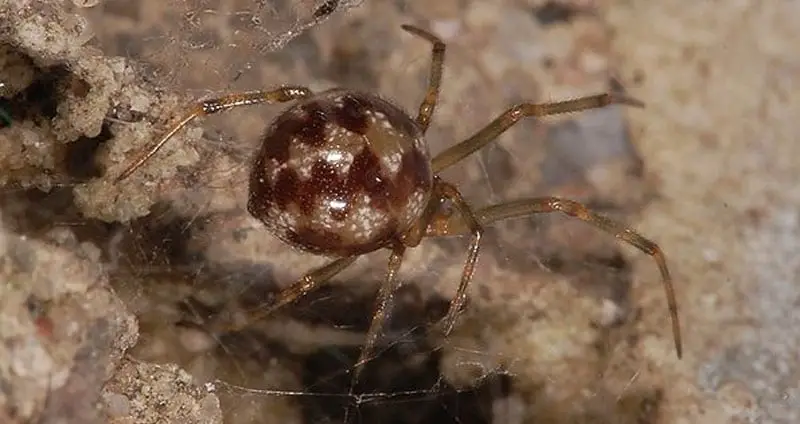One of the most common house spiders out there, the Triangulate Cobweb Spider, or Steatoda triangulosa, is likely a spider you’ve seen at some point.
It’s small in size but quite easy to identify and often stays out in visible areas.
While it’s common, this spider is relatively insignificant and non-threatening.
Table of Contents
At A Glance
| Scientific Name | Steatoda triangulosa |
| Distribution | United States, Europe, Russia, and New Zealand |
| Habitat | Around windows, dirty low-traffic corners, and lights |
| Size | 1/8″ to 1/4″ |
| Bite | Non-threatening |
| Lifespan | 1-2 years |
Triangulate Cobweb Spider Appearance
This is a very small spider species, with a body length of only 1/8″ – 1/4″ for adult females and slightly smaller for males.
Its cephalothorax is a common brownish-orange, and that’s complimented by its skinny yellow legs and tiny hairs that completely cover its body.
Where its appearance gets interesting, though, is in its abdomen. The Triangulate Cobweb Spider has a round, bulbous abdomen that’s cream-colored and accented with purple-brown zigzag lines running from front to back.
This abdominal pattern is what sets it apart from other theridiids and makes it easy to identify.

Triangulate Cobweb Spider Habitat
This species of spider is likely native to Eurasia but was introduced to the United States several hundred years ago. Now, this spider is found in virtually all 50 states in addition to Europe, Russia, and New Zealand.
It’s able to have such a broad distribution because it frequently takes up residence within homes, away from nature’s predators and sometimes extreme climates.
Much like other members of the Theridiidae family, the Triangulate Cobweb Spider constructs an irregular cobweb and spends most of their time in and around that web.
It has very poor eyesight, so it depends on vibrations through the webs to determine if prey or predators are nearby.
Therefore, it often constructs its webs in dark corners which aren’t frequently disturbed. Garages or low-traffic rooms are optimal hiding places for this species.

Triangulate Cobweb Spider Bite & Venom
If you see one of these spiders in your house, don’t panic. Not only are these spiders not known to be aggressive towards humans, but their venom is also non-threatening unless a specific allergy is present.
A bite from the Triangulate Cobweb Spider likely only causes mild irritation, so they aren’t dangerous (unlike some other members of the Steatoda genus).
If you see one of these spiders in your house, you would be fine with just leaving it alone to feed on other bugs. However, if you want to remove it, you can do so with gloved hands or a vacuum cleaner.

Triangulate Cobweb Spider Eggs & Spiderlings
This species mates and produces its egg sacs throughout late spring and early fall. These egg sacs are about the size of the adult itself and are made of a loose white silk.
About 30 eggs are present in each egg sac and they hatch relatively quickly. Once hatched, these spiders linger in the web for a bit before heading out on their own.
Random Triangulate Cobweb Spider Facts
- This spider is often confused with the Brown Widow Spider.
- It has been seen sharing living spaces with Brown Recluse Spiders.
- Household spiders don’t eat Steatoda triangulosa, so it’s only limited by food availability.
- Most specimens rebuild parts or most of their web daily.

